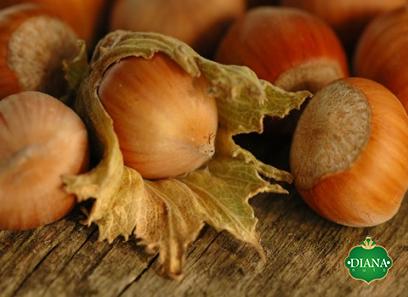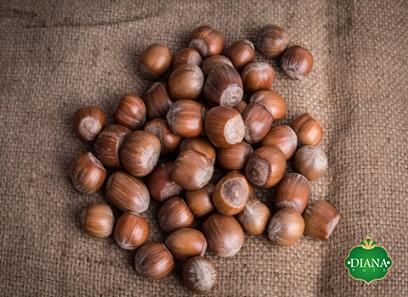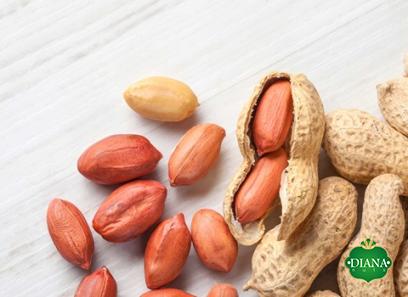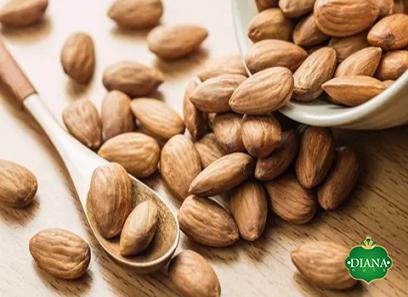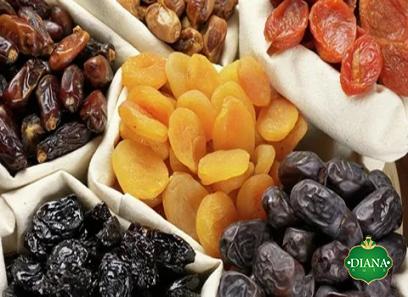It is impossible for a hazelnut tree to pollinate itself. In another word, American hazelnuts are not self pollinating. In order for it to produce nuts, it must first be pollinated. After you have settled on the primary kind of producing hazelnut that you will use, it is time to select the pollinizers that will be used. The need for compatibility arises from the fact that not all hazelnut cultivars are capable of self-pollination. When selecting pollinizers, some factors to consider include the timing of pollen release as well as the compatibility between different types.
Timing: You’ll want to plant late-season pollinizers if you’ve decided to go with a late-blooming cultivar like Jefferson as the producing tree for your orchard. It goes without saying that you’ll need to plant early-season pollinizers if you’ve decided to go with an early-blooming variety like Yamhill. Other plants that bloom earlier in the season are also required.
Because an American hazelnut (Corylus americana) tree possesses male and female flowers that are able to pollinate one another, the tree does not require the assistance of a different type in order to produce nuts. Catkins, both male and female, form in the autumn, remain attached to the tree throughout the winter and eventually blossom alongside female flowers in the spring. The pollen is carried by the wind from the male flowers to the female flowers, where it is then fertilized.
The fruits of the fertilized flowers are nuts, which mature in the autumn. The nuts may be eaten fresh or added to baked products. Either way, they are delicious. Compatibility between different varieties is determined by alleles, which come into play here. Alleles are two or more genes that, typically as a result of mutation, govern the same properties. Alleles can occur in any organism. They are responsible for the hereditary variation and are located in the same place on a chromosome as one another.

Pollination of hazelnut blossoms requires a distinct set of alleles from those found in the pollen grains themselves; otherwise, the nuts won’t form. Each of the female flowers has two different alleles. The female flowers carry either one or both of the alleles that are also present in the male pollen. Because of this, hazelnut trees are unable to pollinate themselves. The procedure of fertilizing hazelnuts is unusual and challenging. A year or so before the hazelnuts are ready for harvest, hazelnut blooms appear.
Hazelnuts are fertilized three to five months after pollination, as opposed to other plants, which are fertilized a few days after pollination. Similar to grasses, hazelnuts are pollinated by the wind rather than by bees or other insects like the majority of other types of flowers. Early June is when female flowers first appear. Late fall to early winter is when they first become apparent. Male catkins develop in the late spring, emerge in the early summer, but don’t reach maturity until the following winter.
In the dead of winter, pollination is at its highest. The time of pollination is heavily influenced by the weather. A bright-red, plume-like tuft, which protrudes from the bud scales, is the plant’s female reproductive organ. There are 4–16 more individual blooms deeper inside the bud scales. There are a number of pairs of long styles with connected stigmas that will collect the pollen. Each has a very little foundation of tissue, called the ovary, that will eventually shape the nutshell. The ovary contains two eggs.
The catkin, which hangs in clusters, is the male component of the hazelnut plant. The part of the stamen that contains the pollen is called the anther. Sperm are carried by pollen. The pollen tube extends to the base of the female style many days after pollination. The pollen tube’s tip shuts, and the entire organ enters a state resembling suspended animation. The ovary steadily expands over the course of four months. The development process quickens in mid-to-late spring, with the majority of nut growth taking place in the last 5 to 6 weeks before harvest.
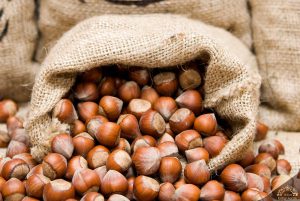
american hazelnuts pollinating
The American hazelnuts, also known as Corylus americana, is a species of tree that is not pollinating itself. It is indigenous to the eastern two-thirds of the United States. It may thrive in full sun or partial shade, but produces a greater quantity of nuts when grown in full sun. It is also tolerant of a broad range of soil types. This natural shrub may grow to a height of 5-10 feet and frequently creates thickets with several trunks.
The blooming season for American hazelnuts occurs in the early spring, often between the months of March and April in Kentucky. Each shrub generates its own unique set of blooms, which may be categorized as either male or female. Female flowers are typically rather inconspicuous due to their little size and their enclosure within bracts, which resemble leaves. The male flowers, also known as catkins, are bigger than the female blooms and dangle from the branches in clusters.
Pollen from another plant is required in order for female flowers on the same plant to become fertilized. Male blooms on the same plant are unable to fertilize female flowers. Because they are pollinated by the wind, American hazelnuts do not generate any nectar in their flowers. Despite the fact that bees do not play a part in the pollination of American hazelnuts, there have been observations of bees collecting the plentiful pollen that is produced by male blooms.
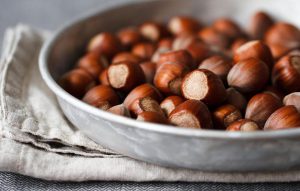
The leaves are also consumed by a number of distinct kinds of moth larvae from throughout the world. These caterpillars and/or the moths that they develop into are a source of food for many different species of animals, including songbirds, bats, parasitoid wasps, and more. Hazelnuts are the product of female flowers that have been fertilized. The foreign varieties that are developed for commercial sales are larger and nuttier than their native counterparts, which are smaller and sweeter.
Raw hazelnuts, roasted hazelnuts, or hazelnuts that have been crushed into flour can all be used in baking. Historically, hazelnuts were frequently used by Native Americans to enhance the flavor of various soups. Hazelnuts have a high protein content and contribute a lot to a healthy diet. They are also an important source of food for a wide variety of wild animals, such as deer, turkeys, squirrels, woodpeckers, quail, grouse, blue jays, and many others.

